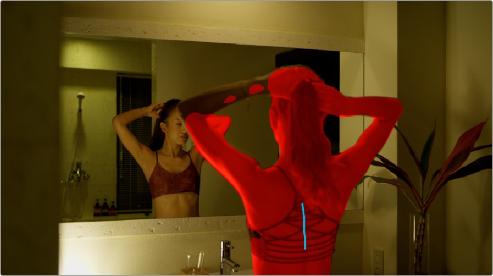
< Previous | Contents | Next >
Adding Strokes to Guide Mask Creation
Here are some tips for how to draw strokes to analyze the image. To identify people, try starting with a single short positive stroke (blue), centered on the face or body.

Drawing the first stroke to identify an entire person
![]()
Depending on the result, more strokes may be needed to differentiate an arm or frizzy hair from the background. If you’re adding a stroke to an arm or hair, don’t put it right at the edge; the goal is not to trace the subject, but to use strokes within the body of the subject to clarify what features belong to the subject, and which do not.
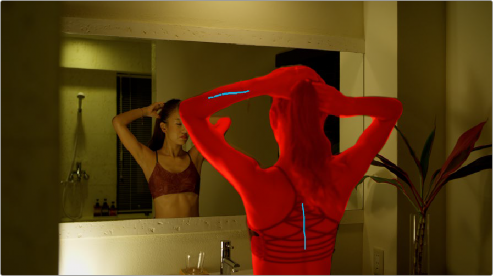
Adding a stroke to the arm to include it as well
As you do this, resist the urge to use too many strokes. One stroke might well be all you need, or you might need two or three, but using more than five strokes for any subject or feature may cause more problems than it solves.
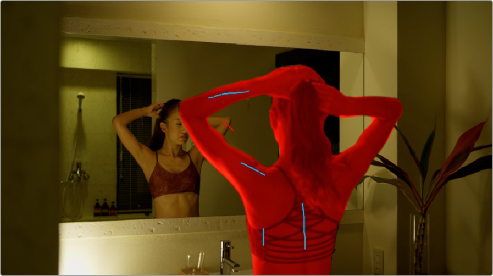
Adding negative strokes to the reflection to remove
To identify faces, try starting with a single short stroke in the middle of the face, along the nose, or from eyes to the lips. Depending on the result, you may need additional strokes to identify the chin, a beard, or to distinguish the forehead from wispy hair.
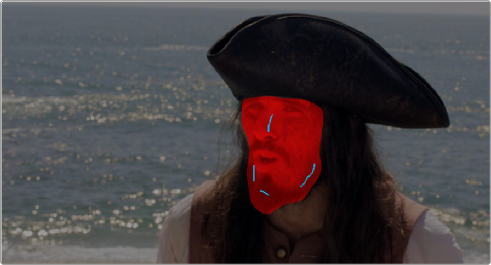
![]()
Drawing strokes to identify a face; notice that additional strokes are needed to include the beard.
It’s a good idea to start with a single stroke, then track the stroke through the duration of the clip (described later in this section). Over the entire clip, you’ll see which parts of the mask may exhibit problems. This will guide where you put additional strokes, in order to more clearly identify the person versus the background, in order to clean up the resulting mask. As you add additional strokes, track those as well and see how things go.
If you notice parts of the background that are erroneously added to the mask, you can add a negative stroke (red) to clarify that those parts of the image should not be isolated. Short strokes, longer strokes, and zig zags are good for backgrounds. Since strokes just help the analysis update the mask, you can try different types of strokes to see what works best, and delete any stroke that doesn’t give good results. As with positive strokes, don’t use more strokes than are absolutely necessary to get the result you want.
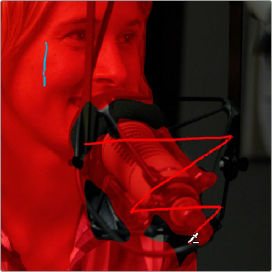
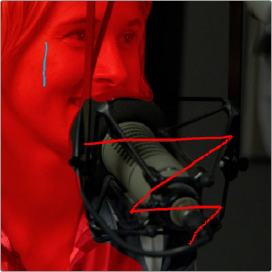
(Left) The microphone incorrectly identified as part of the woman being interviewed, (Right) Drawing negative strokes to identify the microphone as background, using a zig-zag pattern to tag the entire microphone
Similarly, if you’re isolating features such as a face, and you find other features, such as hair, getting in the way, you can draw a negative stroke on the hair to identify it as not part of the face.
If there’s a “hole” in the resulting mask that’s actually part of the background and not the subject, you can try drawing a stroke connecting that hole to the rest of the background.
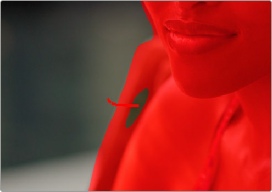
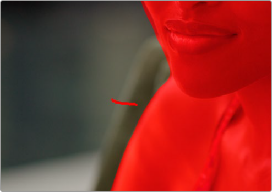
![]()
Drawing strokes to connect the background with itself, to remove part of the mask that’s not part of the person
If there’s an “island” in the mask that’s actually part of the subject and not the background, you can try drawing a stroke across the island that connects one solid part of the mask to itself.
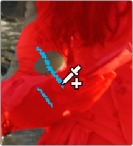
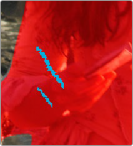
Drawing strokes to fill an island in the subject being isolated